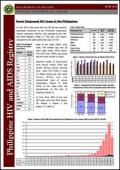What's New
Displaying results 2751 - 2760 of 4052
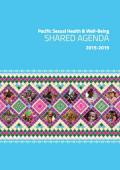
Resource | Publications,
The Pacific Sexual Health and Well-Being Shared Agenda 2015–2019 is a visionary document that provides guidance and strategic direction to strengthen the sexual health response in the Pacific region by shifting the focus from a single disease to a rights-based comprehensive approach to sexual health.
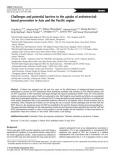
Resource | Publications,
Evidence has emerged over the past few years on the effectiveness of antiretroviral-based prevention technologies to prevent (i) HIV transmission while decreasing morbidity and mortality in HIV-infected persons, and (ii) HIV acquisition in HIV-uninfected individuals through pre-exposure prophylaxis (PrEP).
This paper describes challenges for the implementation of antiretroviral-based prevention and makes the case that TasP and PrEP implementation research in Asia is much needed to provide insights into the feasibility of these interventions in populations where firm evidence of ‘real world’ effectiveness is still lacking.

Resource | Publications,
In compliance with the Law on Statistics of Mongolia, National Statistical Office of Mongolia conducted the first "Social Indicator Sample Survey - 2013" with support from the Government of Mongolia, UNICEF and UNFPA.
The survey data is a key pillar to determine and plan further activities linked to national policy. It will inform actions by decision makers, international organizations and other users of statistical data. The data is also a fundamental source for specialized and in-depth analysis and research. The survey results will lead to the compilation of sectoral indicators in the areas of health, education, development and protection, well-being of rights of children and women. These are complemented by indicators of the reproductive health, family planning, knowledge and attitude towards HIV/AIDS and sexual behaviour of Mongolian men and women.

Resource | Publications,
In compliance with the Law on Statistics of Mongolia, National Statistical Office of Mongolia conducted the first "Social Indicator Sample Survey - 2013" with support from the Government of Mongolia, UNICEF and UNFPA.
The survey data is a key pillar to determine and plan further activities linked to national policy. It will inform actions by decision makers, international organizations and other users of statistical data. The data is also a fundamental source for specialized and in-depth analysis and research. The survey results will lead to the compilation of sectoral indicators in the areas of health, education, development and protection, well-being of rights of children and women. These are complemented by indicators of the reproductive health, family planning, knowledge and attitude towards HIV/AIDS and sexual behaviour of Mongolian men and women.
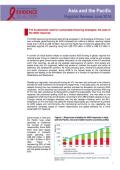
Resource | Reviews and Snapshots,
The AIDS response has achieved astonishing successes in the leveraging of finances. In just over a decade, global financing for AIDS increased from millions to billions, reaching the highest levels ever in 2012 at US$ 19 billion. Asia and the Pacific have mirrored this global trend, with estimated regional HIV spending rising from US$ 700 million in 2005 to US$ 2.2 billion in 2012.

Resource | Publications,
This paper enshrines the concept of equality through Convention on the Elimination of All Forms of Discrimination against Women (CEDAW) to provide a resource for the ASEAN Intergovernmental Human Rights Commission (AICHR) in its engagement with the ASEAN governments using international standards in promoting and protecting the human rights of women and girl children. With the exception of Brunei, Malaysia and Singapore who have no reservation to the substantive articles of CEDAW, most of the ASEAN countries have ratified CEDAW and have undertaken binding obligations to promote and protect the human rights of women according CEDAW standards.
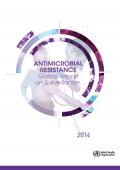
Resource | Publications,
The report is intended to provide information primarily for public health policy-makers and managers, and for the wider medical and public health community (including pharmaceutical companies), as a support for informing strategic actions and programme planning. It will also be of interest to the other sectors that are directly involved, including veterinary drug and animal husbandry, agriculture and aquaculture.
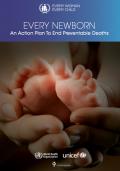
Resource | Publications,
The action plan sets out a vision of a world in which there are no preventable deaths of newborns or stillbirths, where every pregnancy is wanted, every birth celebrated and women, babies and children survive, thrive and reach their full potential. Nearly 3 million lives could be saved each year if the actions in the plan are implemented and its goals and targets achieved.
Based on evidence of what works, and developed within the framework for Every Woman Every Child, the plan enhances and supports coordinated, comprehensive planning and implementation of newborn specific actions within the context of national reproductive, maternal, newborn, child and adolescent health (RMNCAH) strategies and action plans, and in collaboration with stakeholders from the private sector, civil society, professional associations and others. The goal is to achieve equitable and high quality coverage of care for all women and newborns through links with other global and national plans, measurement and accountability.
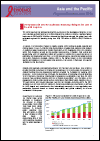
Resource | Reviews and Snapshots,
The AIDS response has achieved astonishing successes in the leveraging of finances. In just over a decade, global financing for AIDS increased from millions to billions, reaching highest levels ever in 2012 at US$ 19 billion. Asia and the Pacific has mirrored this global trend, with estimated regional HIV spending rising from US$ 700 million in 2005 to US$ 2.2 billion in 2012.






